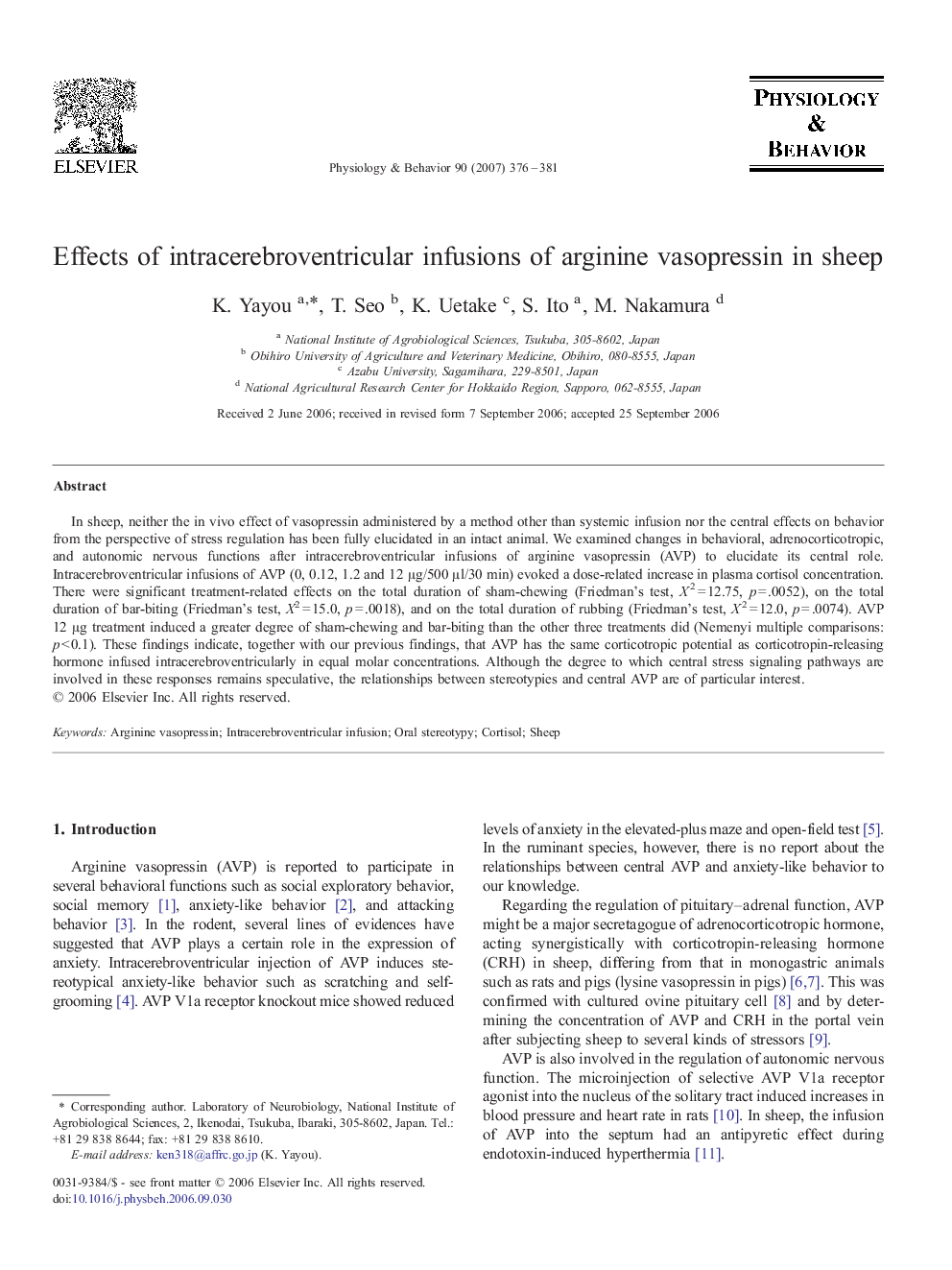| Article ID | Journal | Published Year | Pages | File Type |
|---|---|---|---|---|
| 2846200 | Physiology & Behavior | 2007 | 6 Pages |
In sheep, neither the in vivo effect of vasopressin administered by a method other than systemic infusion nor the central effects on behavior from the perspective of stress regulation has been fully elucidated in an intact animal. We examined changes in behavioral, adrenocorticotropic, and autonomic nervous functions after intracerebroventricular infusions of arginine vasopressin (AVP) to elucidate its central role. Intracerebroventricular infusions of AVP (0, 0.12, 1.2 and 12 μg/500 μl/30 min) evoked a dose-related increase in plasma cortisol concentration. There were significant treatment-related effects on the total duration of sham-chewing (Friedman's test, X2 = 12.75, p = .0052), on the total duration of bar-biting (Friedman's test, X2 = 15.0, p = .0018), and on the total duration of rubbing (Friedman's test, X2 = 12.0, p = .0074). AVP 12 μg treatment induced a greater degree of sham-chewing and bar-biting than the other three treatments did (Nemenyi multiple comparisons: p < 0.1). These findings indicate, together with our previous findings, that AVP has the same corticotropic potential as corticotropin-releasing hormone infused intracerebroventricularly in equal molar concentrations. Although the degree to which central stress signaling pathways are involved in these responses remains speculative, the relationships between stereotypies and central AVP are of particular interest.
